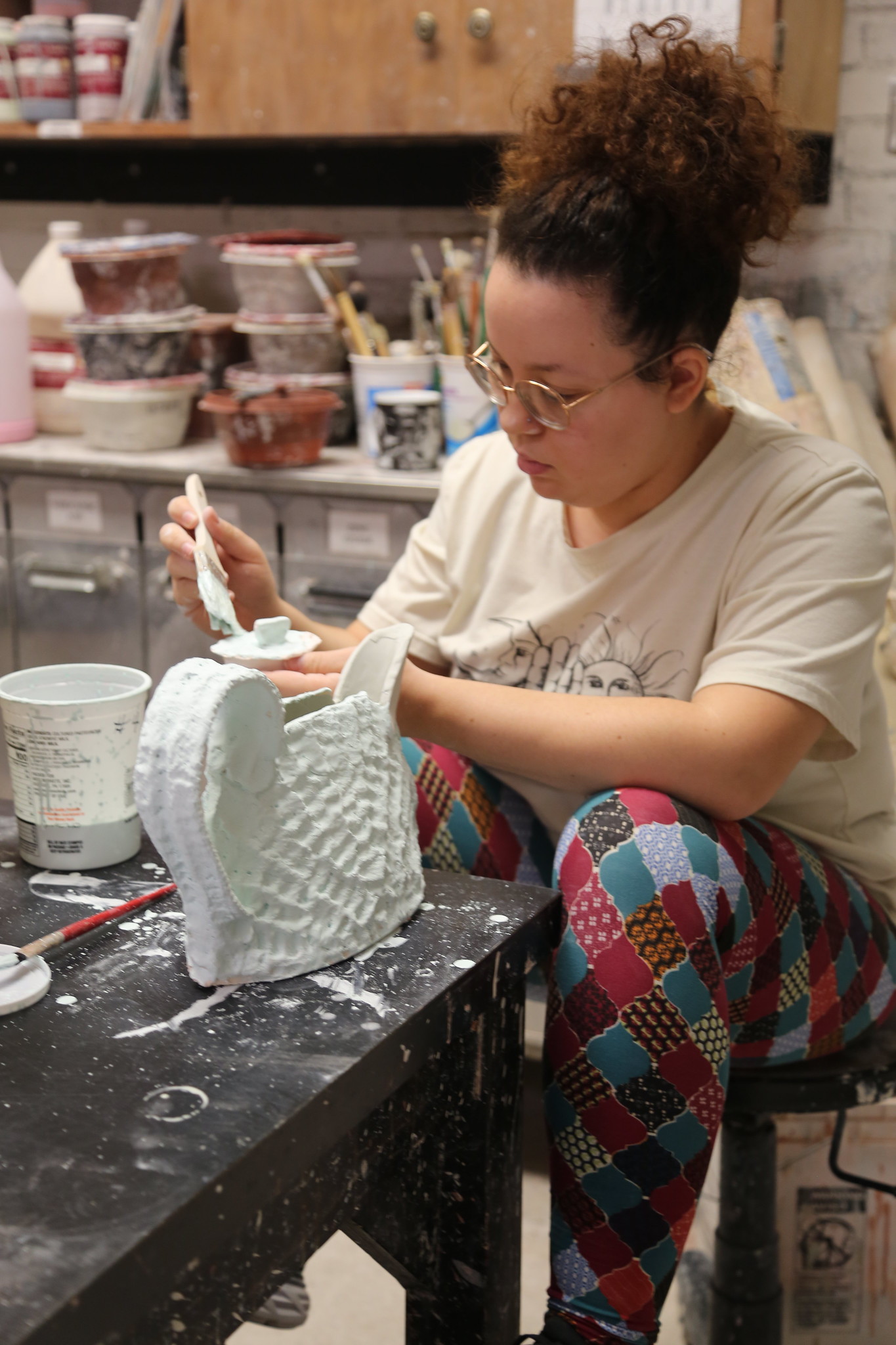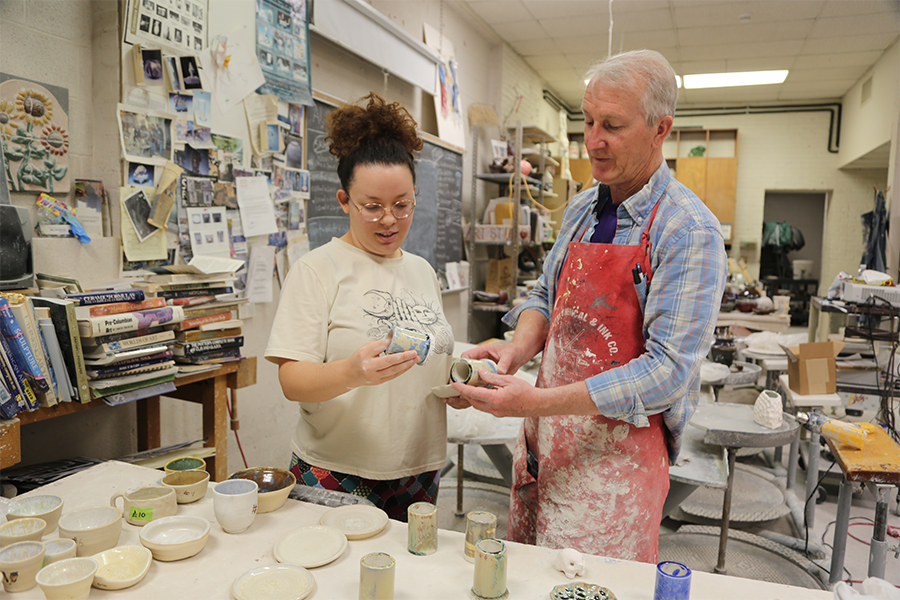Elizabethtown College Fine Art major Ashley Van Dunk ’24 is combining art and chemistry this summer by developing new recipes for crystalline ceramic glazes at lower, more-economical firing temperatures.
With faculty mentor, Etown Professor of Art, Milt Friedly lending his expertise and experience, the pair of Blue Jays have performed over 50 tests to establish limits for the base and color chemistry of glazes at multiple temperatures. Van Dunk has the ultimate goal of creating a glaze recipe which will be entirely her own and eventually publishing her work in Ceramics Monthly.
Their work on campus is part of the Elizabethtown College Summer Creative Arts and Research Program (SCARP).
Title of Research
Chemical Formulation and Utilization of Crystalline Glazes on Original Ceramic Art
Student Researcher
Ashley Van Dunk ’24 (Fine Art major)
Faculty Mentor
 Milt Friedly, Professor of Art
Milt Friedly, Professor of Art
What are you researching?
With ceramic work, the final step often is glazing your art. One type of glaze is called a crystalline glaze, and most often the crystals being grown are a zinc silicate mineral called willemite. This glaze is traditionally fired at Cone 10, or approximately 2381o F. Firing at this high temperature is costly and not good for the environment. This summer, I’m testing and developing new recipes for crystalline glazes which can be fired at Cone 7, or approximately 2194o F, with the end goal of being more economical with the firing temperature.
Why did you choose this topic?
I chose this topic because it’s a fun balance between art and chemistry.
What is the most interesting aspect of this research?
The most interesting part of this work is learning how to create my own glazes!
How has your faculty mentor helped you?
My mentor is easy-going, flexible and checks-in daily to make sure the goals we set are being met.
Hear from the faculty mentor – Milt Friedly
“Ashley has tackled the assigned work with great enthusiasm and perseverance, working existing glaze formulas from batch to empirical and initial chromophore (color) testing,” Friedly said. “To date, we have made over 50 tests establishing limits for the base and color chemistry at two different temperatures. We are both making new ceramic works where we can apply our glaze research. Ashley is determined to author some original glaze formulas through this experience. She loves the idea of investigating and creating.”

